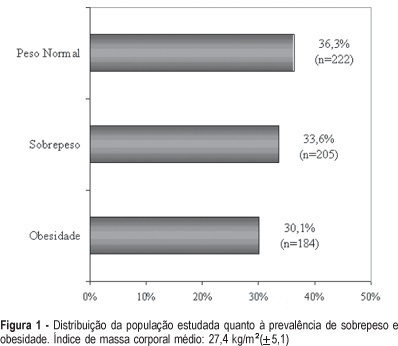Revista Brasileira de Ginecologia e Obstetrícia. 2005;27(8):479-484

PURPOSE: to evaluate the prevalence of overweight and obesity among climacteric women. METHODS: this cross-sectional study included 611 women aged between 45 and 60 years attended at a climacteric clinic from January to June 2003. The prevalence of overweight and obesity was evaluated through the body mass index (BMI). Overweight or obesity was considered when there was a BMI equal or higher than 25 kg/m². Sociodemographic and reproductive variables as well as life style were also evaluated. The chi2 test followed by logistic regression was performed for statistical analysis. RESULTS: the average age of the studied women was 51.4 (±4.4) years, whereas 52.9% of them were postmenopausal. About 63.7% of them had a BMI equal or higher than 25 kg/m². The prevalence of overweight and obesity was 33.6 and 30.1%, respectively. The prevalence of overweight and obesity was higher among older women (OR=1.2; 95%IC: 1.1-1.4) or non hormonal therapy users (OR=1.8; 95%IC: 1.2-2.8). The opposite was observed among the women without a professional occupation (OR=0.6; 95%IC: 0.5-0.9) or a steady partner (OR=0.7; 95%IC: 0,4-0,9). CONCLUSIONS: in this study, the prevalence of overweight and obesity was influenced by age, but not by the menopausal status. The association between the marital status and occupation and the BMI strengthens the hypothesis that the health of the climacteric women may be influenced by biological factors as well as by psychosocial factors and life style. The lowest prevalence of overweight and obesity among the users of hormonal therapy may be explained by possible restrictions in relation to its prescription for women with previous overweight or obesity. Further studies are necessary to get more conclusive results, in particular with longitudinal studies.
Search
Search in:


Comments